Designing Your Ideal Log Cabin Living Space:Tips for Interior and Exterior
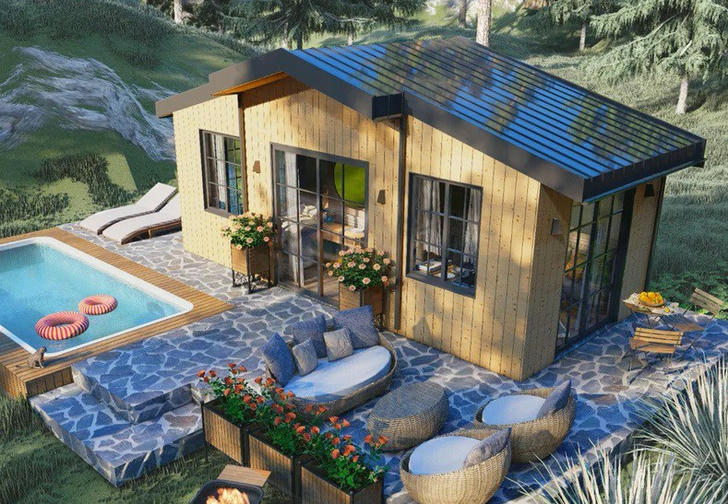
Log cabin design enhances the natural charm of rustic living, blending simplicity and coziness with nature. By using thoughtful layouts, natural materials, and warm color schemes, you can create a living space that feels both relaxing and inviting. Outdoor areas that connect with the surrounding landscape, featuring natural wood, stone elements, and peaceful gardens, offer tranquil retreats. In this article, we’ll explore practical tips for planning, choosing materials, and designing your log cabin to make it the ideal home for you.
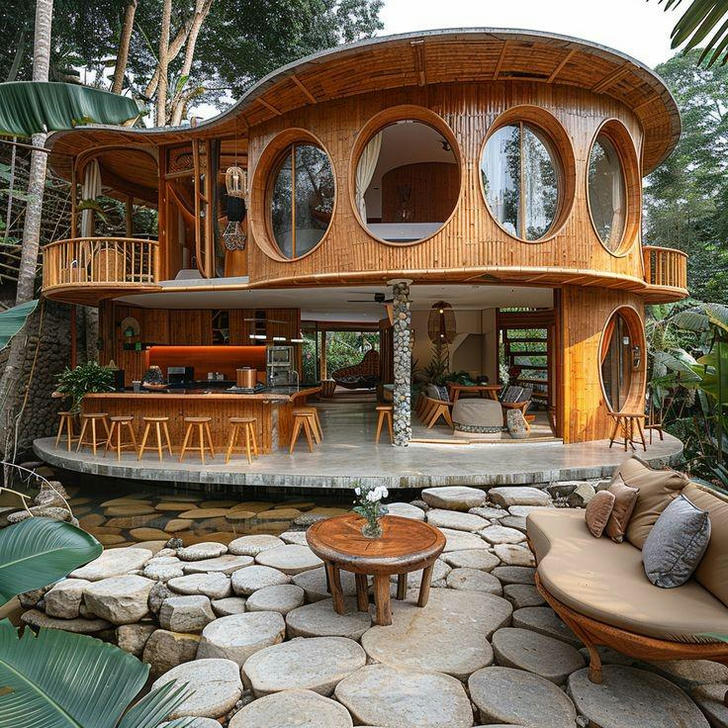
Space Planning: Making the Most of Your Log Cabin
To plan your log cabin spaces effectively, begin with a needs analysis. Consider the primary purpose of each room. In cabins, living spaces often serve multiple functions—gathering by the fireplace, dining, or even sleeping. Recognizing the specific use of each area will help you arrange furniture and choose activities that suit the environment.
User Case: A couple living in a 1,200-square-foot cabin transformed their open-concept living area by designating sections for specific purposes. By placing a large, rustic dining table near the kitchen and a cozy seating area by the fireplace, they created distinct zones for family dinners and relaxation without overcrowding the space.
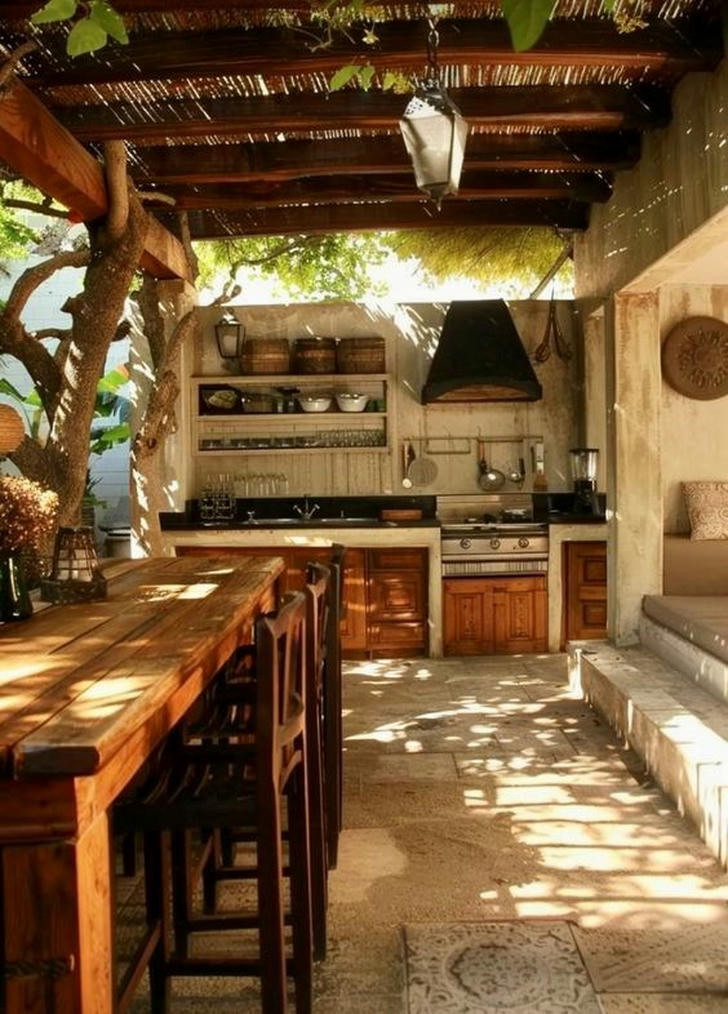
Next, focus on the layout. Log cabins often have open floor plans, so it’s crucial to arrange furniture in a way that promotes easy movement and maximizes space. For outdoor areas, consider how the natural landscape affects the layout of your patio, seating, or garden spaces.
Ensure that the size of your furniture matches the space. Oversized furniture can overwhelm a small cabin, while well-scaled pieces help maintain balance. In the exterior, look at how the terrain interacts with your seating and pathways to create smooth transitions between indoor and outdoor living.
Finally, consider lighting and ventilation. In cabins, natural light is vital to creating a warm, airy feel. Incorporate large windows, skylights, or even a sunroom to bring in light and connect the indoors with the beauty of nature outside.
Color Coordination: Creating a Warm, Inviting Atmosphere
The right color palette is key to setting a cozy, rustic mood in your log cabin. Warm, earthy tones like browns, beiges, and deep greens enhance the natural wood elements, while soft whites and light blues can create a sense of space and calm.
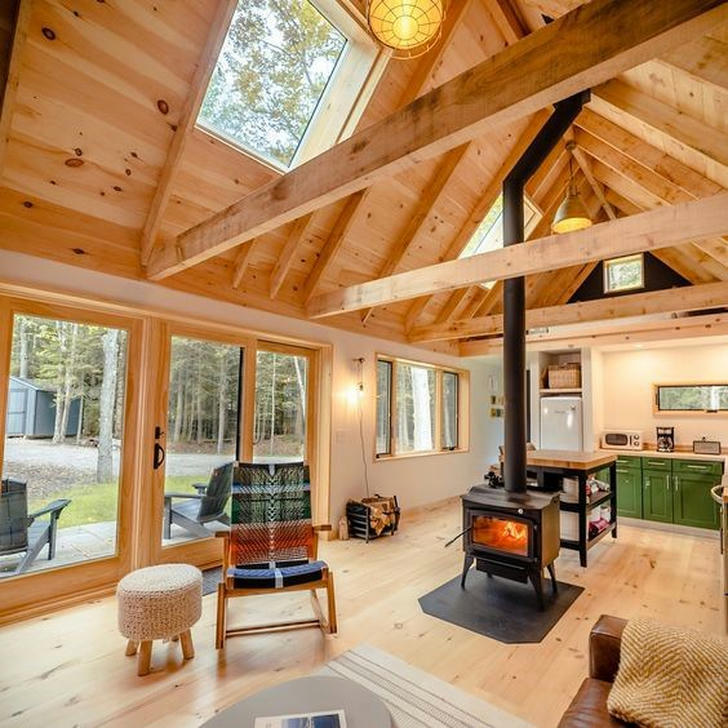
Data Insight:Research from the University of Alberta shows that natural, muted tones reduce stress and promote a sense of peace. These colors are perfect for log cabins, where the goal is to create a tranquil environment that mirrors the outdoors.
Use the 60-30-10 rule when choosing colors: 60% of a dominant shade (e.g., warm wood tones), 30% of a complementary color (such as sage green or slate grey), and 10% for accents like deep red or copper. This approach helps maintain a cohesive aesthetic while allowing for personality through decor elements.
Consider how natural light influences your color choices. Dark wood may feel too heavy in small spaces, so lighten the look with soft furnishings in lighter shades. In exterior areas, use colors that blend with the landscape, such as weathered wood and stone.
Material Selection: Rustic Charm Meets Durability
The materials you choose play a huge role in the overall aesthetic and functionality of your log cabin. Rustic designs often highlight natural elements like wood, stone, and metal. Wood is the star of log cabins, but you can mix in materials like wrought iron or copper for an added rustic charm.
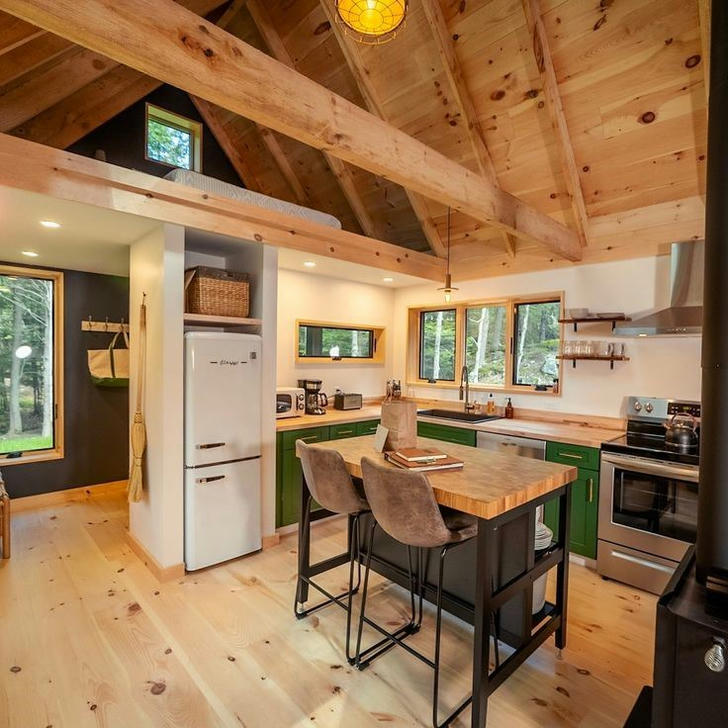
User Case: A family restoring an old log cabin replaced their worn wooden floors with reclaimed timber, maintaining the cabin’s rustic charm while also choosing an eco-friendly material. They paired the wood with stone countertops in the kitchen, balancing warmth with durability.
Functionality is key when selecting materials. For example, use stone or tile for areas exposed to water, such as bathrooms or near fireplaces. When designing outdoor areas, consider the local climate—stone patios or gravel pathways can handle heavy rain, while wood decking adds warmth to dry, sunny spaces.
Texture plays a big role in rustic design. Use rough-hewn wood, soft textiles, and stone accents to create depth. Outdoors, add natural materials like wooden benches or stone fire pits to maintain harmony with the environment.
Furniture Layout: Balancing Cozy Comfort and Practicality
Furniture layout in a log cabin should emphasize comfort and a connection with nature. The aim is to create inviting, functional spaces while ensuring there’s a good flow between indoor and outdoor living.
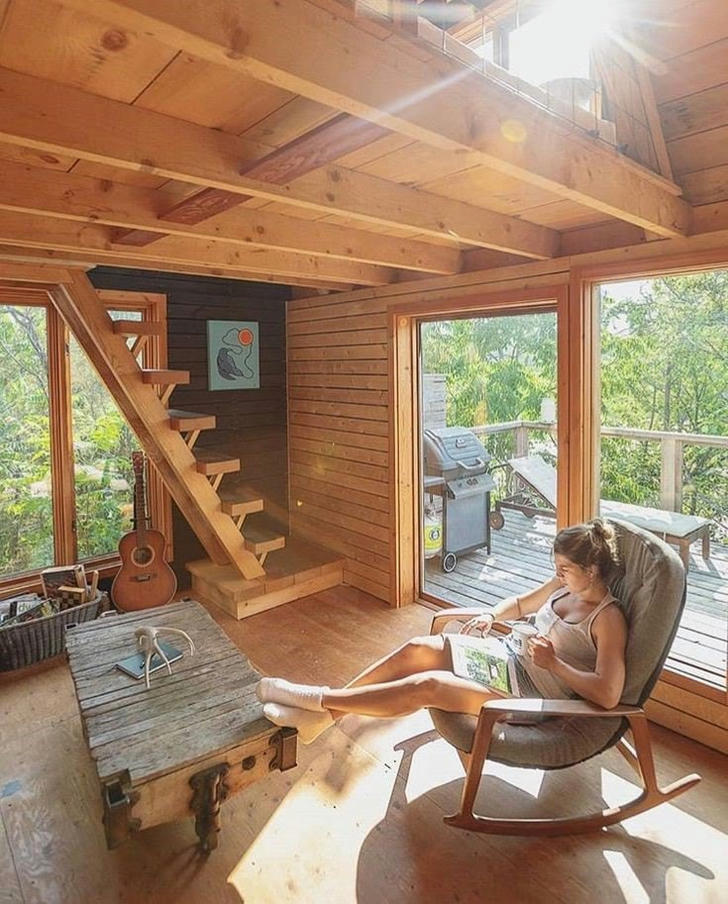
User Case: A log cabin owner arranged their seating around a central fireplace, creating a cozy focal point for the living room. By adding a large window seat overlooking the woods, they extended the living space visually and encouraged more time spent enjoying the natural surroundings.
Choose furniture that fits the scale of your cabin. Large, cushioned couches or chairs with wood frames enhance the rustic feel, while smaller cabins benefit from space-saving, multifunctional furniture like storage benches or foldable dining tables.
Ensure that the layout promotes easy movement, especially between living areas and the outdoor patio or deck. Arrange furniture to draw attention to focal points, like a fireplace or a scenic window view. Incorporate cozy touches like throw blankets, pillows, and rugs in natural materials like wool or cotton to add warmth.
Outdoor Landscape Design: Embracing Nature
Outdoor spaces are vital to log cabin living, as they provide a natural extension of the home’s rustic charm. Start by considering the natural features of the land. Choose materials and plants that harmonize with the landscape, ensuring your design feels organic and not forced.
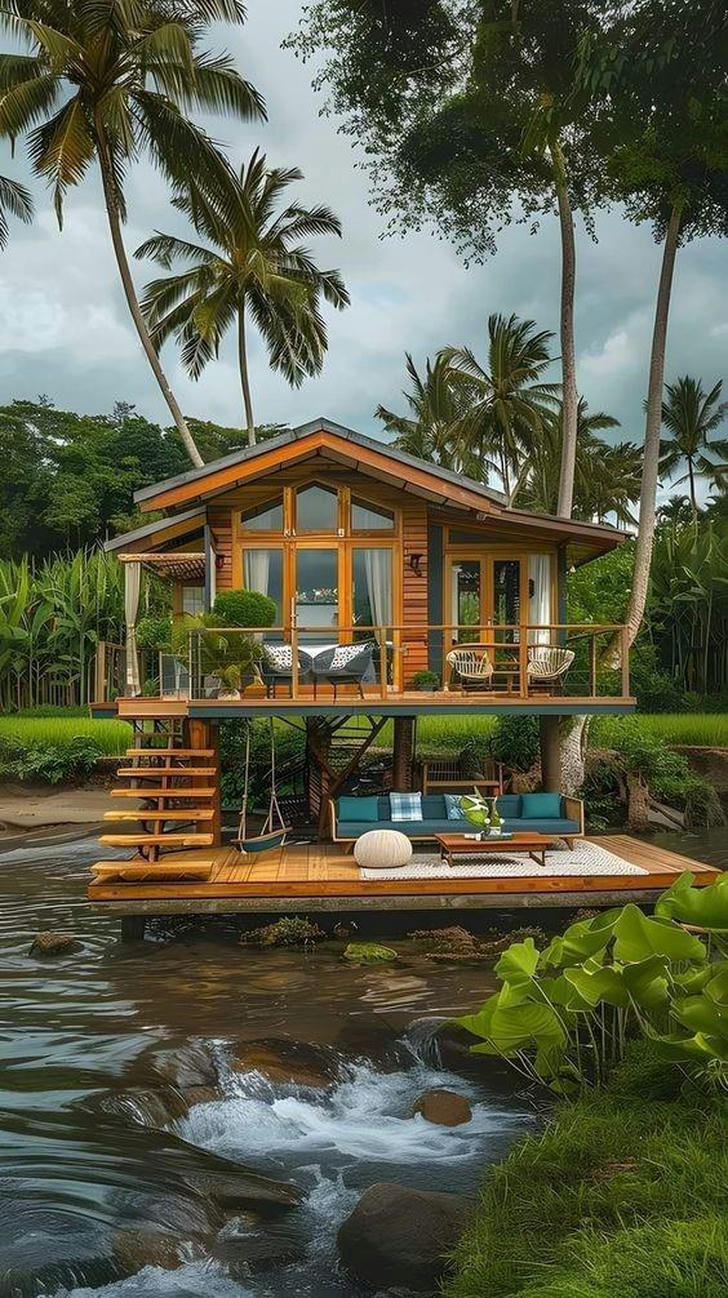
User Case:A cabin owner redesigned their backyard to feature a stone pathway leading to a small fire pit area surrounded by native trees and shrubs. This simple addition enhanced the usability of the outdoor space while maintaining the natural look of the surrounding woods.
When designing the exterior, think about how to integrate seating areas, fire pits, or even a small garden. Choose native plants that thrive in the local climate, reducing the need for excessive maintenance. Incorporate natural materials like stone, gravel, or timber for patios and walkways.
Lighting is another important aspect of outdoor design. Subtle lighting around pathways and seating areas adds safety and ambiance without disrupting the natural beauty of the landscape.
Designing your ideal log cabin living space involves thoughtful planning, from space optimization and color coordination to material selection and outdoor design. These strategies enhance both the beauty and functionality of your cabin, creating a space that reflects your love for nature and rustic living. By transforming ordinary spaces into personalized retreats, you can create a home that offers comfort, warmth, and a deep connection with the natural world.
